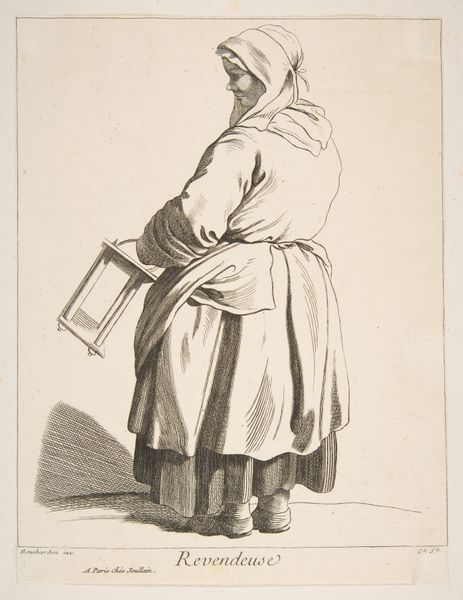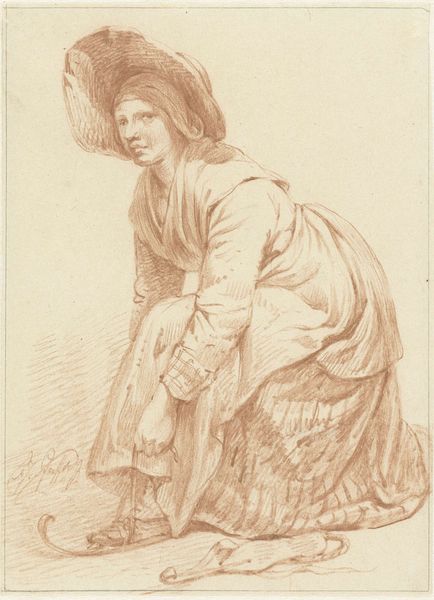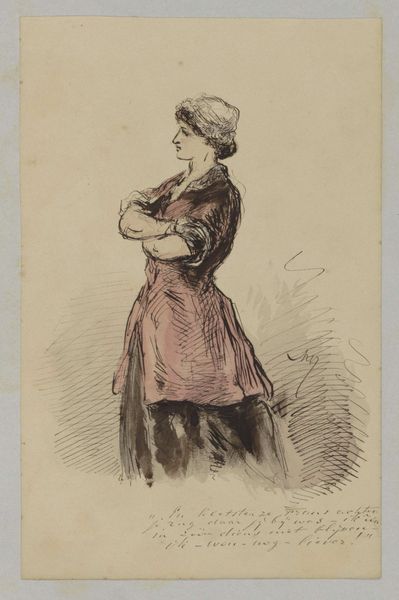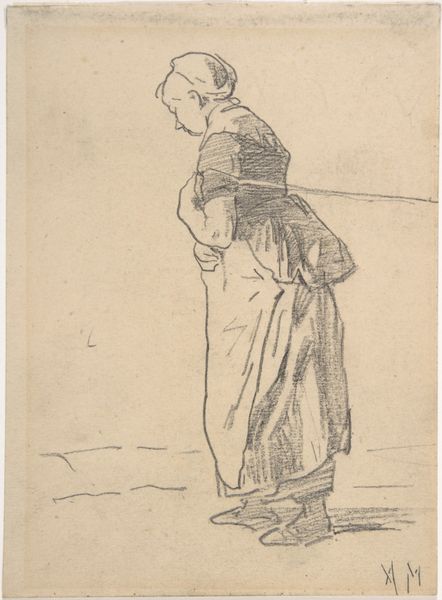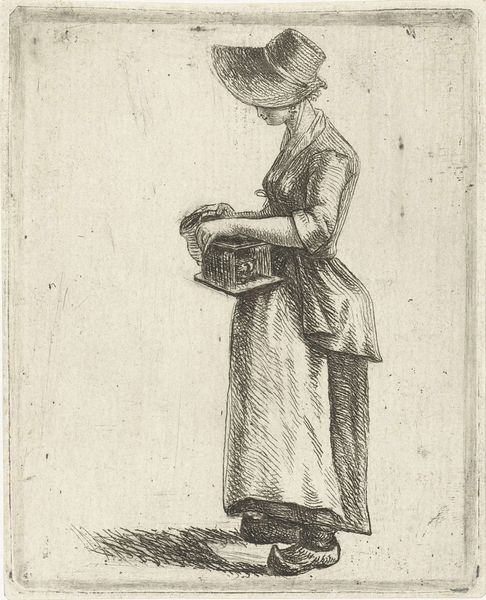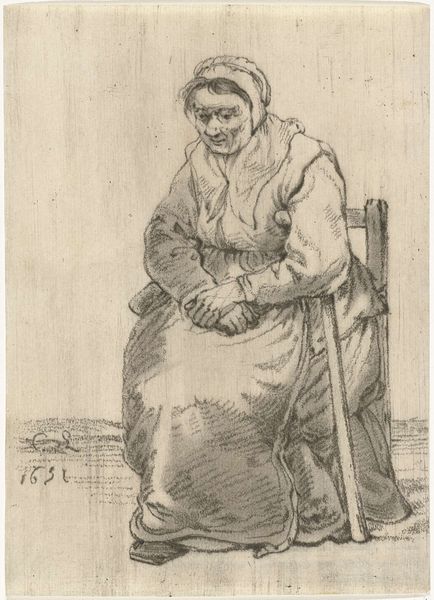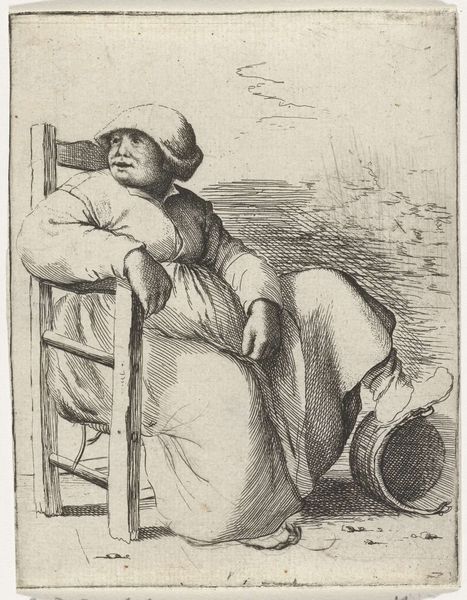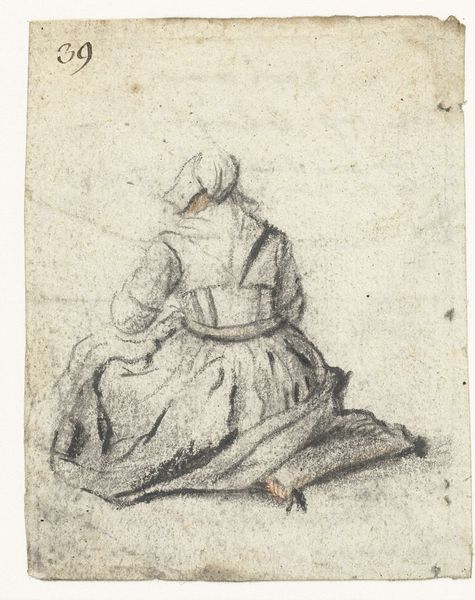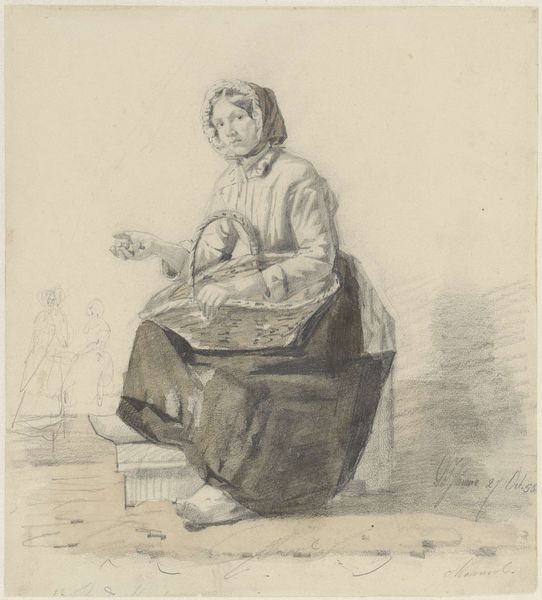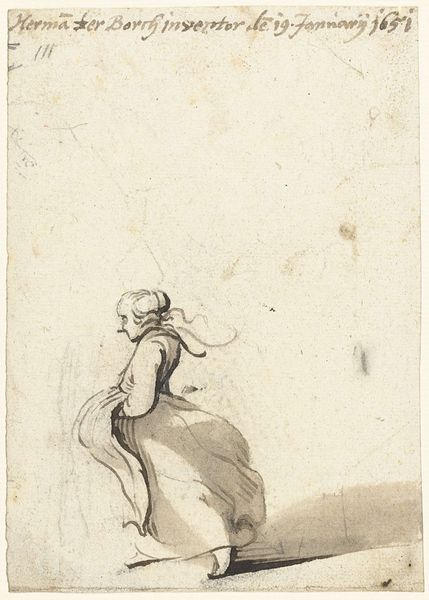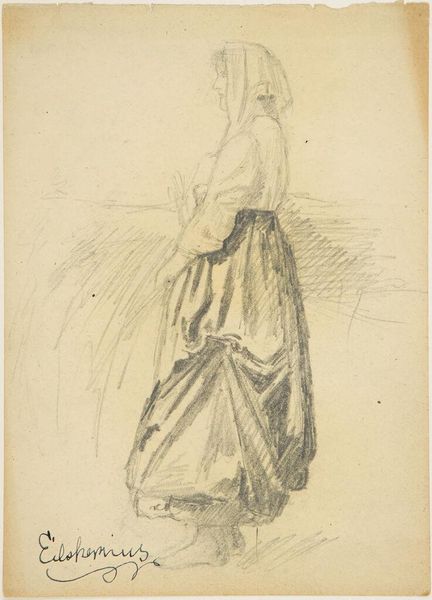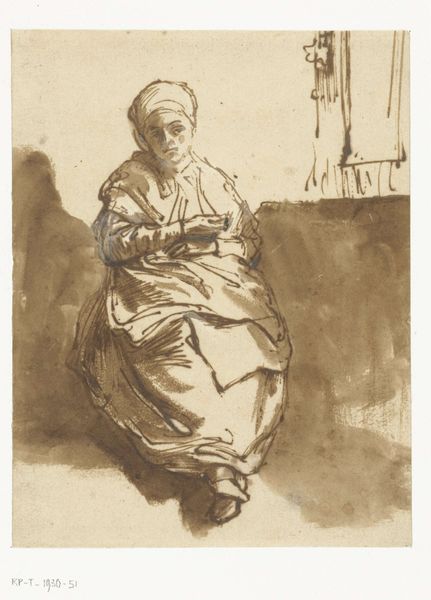
drawing, pencil
#
portrait
#
drawing
#
pencil sketch
#
pencil drawing
#
pencil
#
portrait drawing
#
genre-painting
#
realism
Dimensions: height 230 mm, width 196 mm
Copyright: Rijks Museum: Open Domain
Curator: Let’s turn our attention to this intriguing pencil drawing titled “Zittende vrouw met melkbus,” or “Seated woman with milk churn,” created sometime between 1851 and 1920 by Johan Paul Constantinus Grolman. Editor: It’s evocative; the woman’s pose suggests weariness or perhaps anticipation. I’m immediately drawn to the contrast between the detailed rendering of her figure and the more loosely sketched background. Curator: It’s important to see this image within the context of genre painting during that era. Artists were often focused on portraying scenes of everyday life. The social realities for many women working in agricultural roles were difficult. Editor: Absolutely. The realism is captivating, although perhaps softened by the nature of a pencil sketch. Note the deliberate play of light and shadow; it defines the folds of her clothing and the curve of the milk churn. Curator: These depictions of rural life became popular due to urbanization trends, a kind of idealized portrait, somewhat nostalgic for the simpler life left behind as industrialization took hold. Editor: Yet, there's nothing overly sentimental here, is there? Grolman captures the woman’s stoicism, and perhaps also the monotony of rural labor. Even in pencil, the texture of her clothing, and the roughness of the surface she sits upon, are very apparent. Curator: I agree. Also, consider how women in rural roles contributed to the Dutch economy and consider the burden of labor resting on their shoulders and this representation becomes very significant. It elevates their stories beyond mere representation and begins a form of record keeping. Editor: I find the semiotics of her averted gaze really interesting, maybe toward the horizon she seeks rest, or a change from this everyday experience? The artist could be indicating inner strength or resolve, as seen through the formal components like posture, shading and details. Curator: A lovely insight, she truly embodies both a tangible individual and an allegory of working-class women’s vital societal roles. It provides great consideration into class structure of the time period. Editor: Seeing it through your eyes certainly enriches the experience. This piece becomes more than a simple portrait—it’s a window into a complex socio-political landscape.
Comments
No comments
Be the first to comment and join the conversation on the ultimate creative platform.
